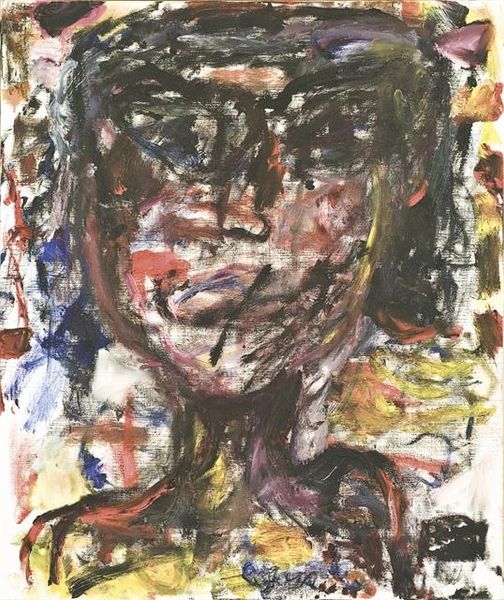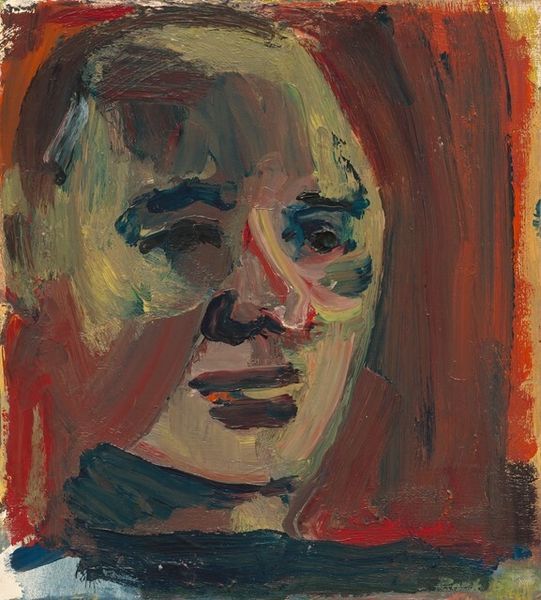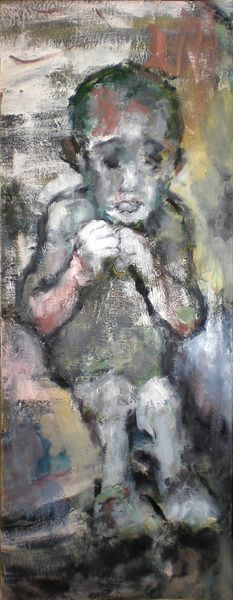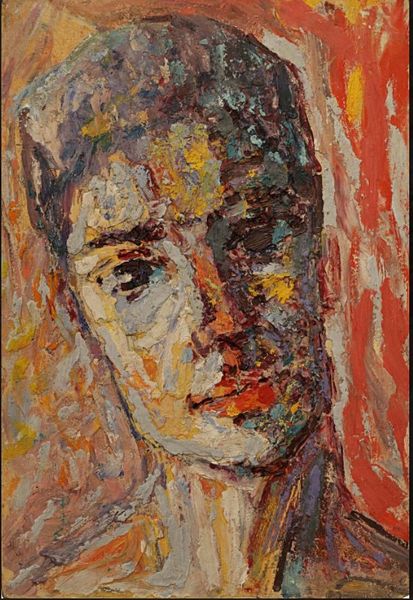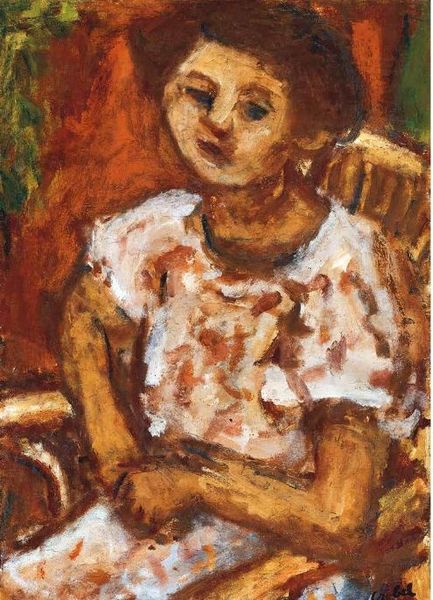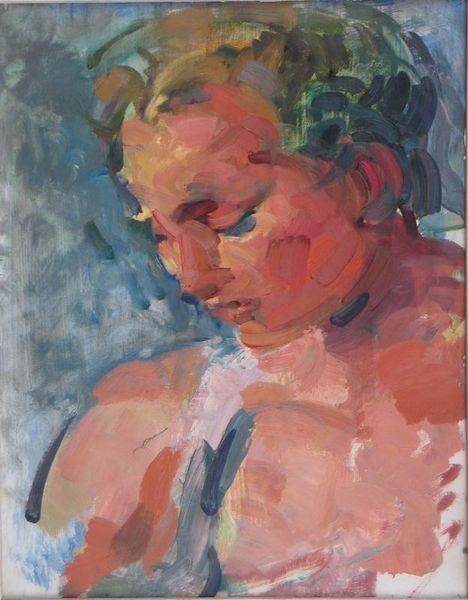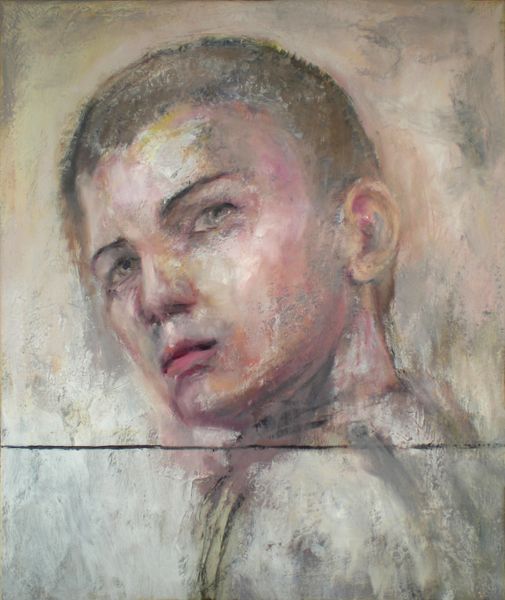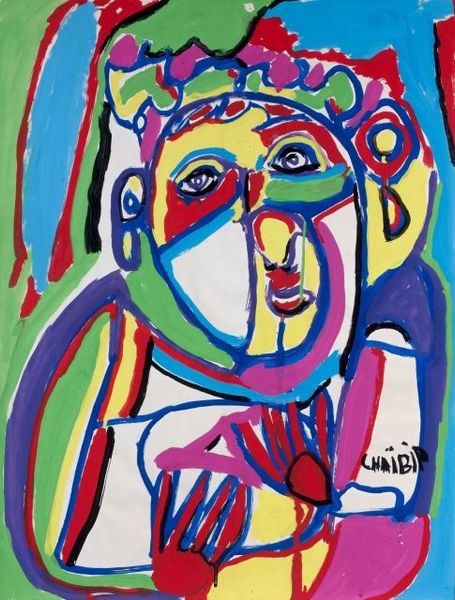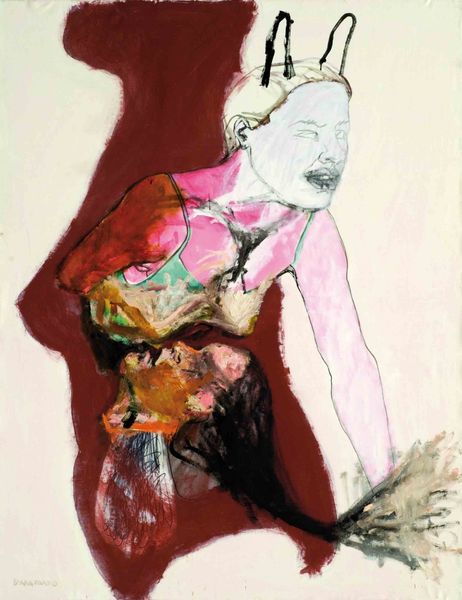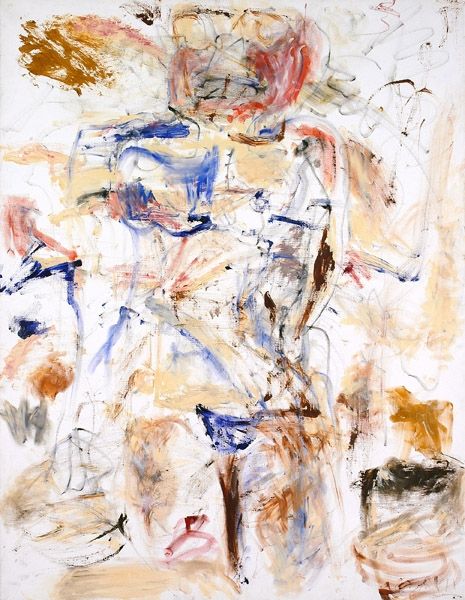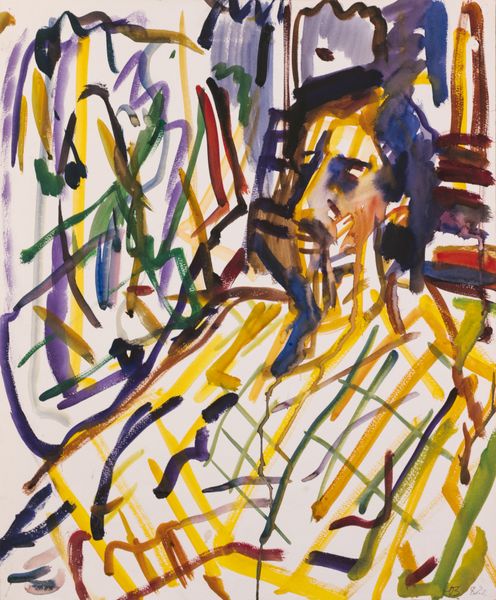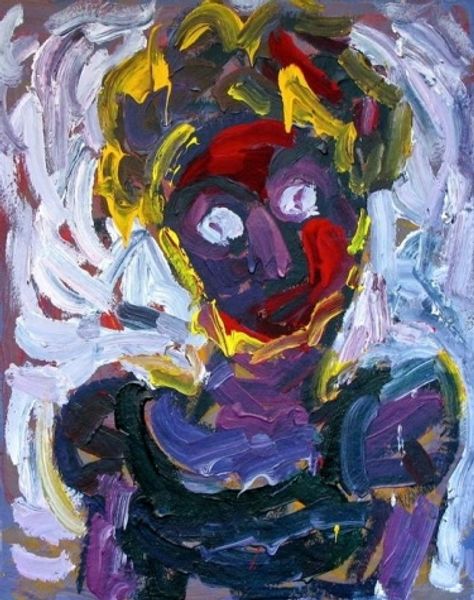
Copyright: Georg Baselitz,Fair Use
Editor: Here we have Georg Baselitz's "Divided Hero" from 1966, an oil painting that feels both unsettling and intriguing. The raw brushstrokes and fragmented figure are striking. What’s your take on this piece? Curator: Well, given the period, and looking at the materiality, I see it as a profound comment on postwar German identity. Notice the aggressive application of the oil paint – it's not just representation, it's a physical enactment of trauma. The means of production are paramount here, reflecting the social and political disruptions of the time. Editor: So, you're saying the materials and how he uses them speak to the social climate? I hadn’t thought of it that way. It looks like an expressionistic portrait to me. Curator: Precisely. It moves beyond mere 'portraiture'. Consider how the "hero" is divided. Baselitz is dissecting not just the figure, but the very notion of heroism prevalent in preceding eras. He questions its validity in a society grappling with defeat and moral reckoning. How do you see the figure's detachment from its conventional portrayal playing into this critique? Editor: The fragmentation definitely complicates any glorification of heroism, pointing to its deconstruction. So the broken representation reflects a broken society? Curator: Exactly. This isn't just a painting; it’s a material testament to a shattered social fabric, critiquing both traditional art forms and prevailing societal values through the very act of its creation. We must consider his artistic labor. He’s responding to dominant trends through deliberate manipulation of material processes and pushing against both fine art and craft conventions. Editor: I see the materiality challenging conventional "heroic" portrayals. Thanks for expanding my understanding. Curator: Absolutely! And remember, analyzing the ‘how’ of its making helps us better grasp the ‘why’ behind the artwork.
Comments
No comments
Be the first to comment and join the conversation on the ultimate creative platform.
